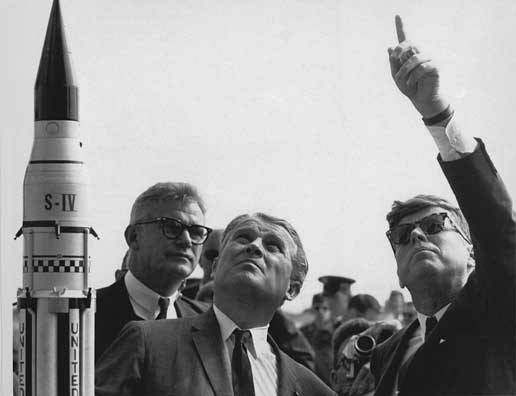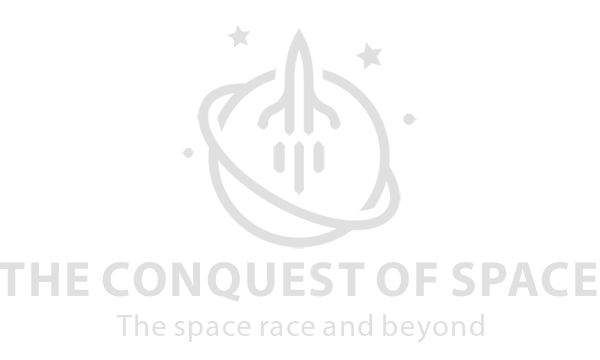War and Space
Civilization has known war and conflict all throughout its history. The Second World War gave birth to the space age, but long  before that battle humans gazed at the sky and dreamed of what existed beyond the reaches of Earth while on the ground the use of rockets was strictly as a military weapon. It is thought that the use of black powder rockets started as early as the thirteenth century in China. Crudely constructed, unguided and unsophisticated, the early rockets were meant more to strike fear than to cause actual loss and damage.
before that battle humans gazed at the sky and dreamed of what existed beyond the reaches of Earth while on the ground the use of rockets was strictly as a military weapon. It is thought that the use of black powder rockets started as early as the thirteenth century in China. Crudely constructed, unguided and unsophisticated, the early rockets were meant more to strike fear than to cause actual loss and damage.
As technology progressed and dreamers of space emerged a new thinking on the use of rockets for manned space flight and exploration was born. Leading thinkers like Russia’s Konstantin Tsiolkovsky who wrote the first works and theories on space travel and Hermann Oberth whose works inspired the likes of Werner Von Braun and other young Germans to not just dream of space, but find ways to make space flight a reality put forth bold ideas on how space travel could be achieved. Meanwhile, in the United States, Robert Goddard was testing liquid fueled rockets as a way to achieve higher altitudes with the ultimate goal of reaching space. These men, the founding fathers of space flight laid the foundation for using rockets to send humans into space.
Rocketry’s ancestral heritage was hard to escape and over the centuries the leaders of nations and commanders of armies seized on the opportunity to refine the rocket to achieve greater accuracy and destruction. No more evident is Adolph Hitler whose support was initially lukewarm, but in his quest for domination of Europe left no option off the table including the development of powerful rockets that could terrorize his enemies.
The men tasked to build these weapons were the same men that Oberth inspired with dreams of manned flight, but men whose own ideas and dreams were deferred to focus on rockets as weapons of war. Through the efforts of war came the technology to reach space. The V-2 became the first object to reach beyond the boundary of Earth’s atmosphere. After the fall of Germany the Americans inherited the twenty-five year advantage the Germans had built in rocket technology including the brains, plans and vision to send men into space and the architect of Germany’s space technology Werner Von Braun. The Russians were also the beneficiary of the German technology and had their own space pioneer in Sergei Korolev. Korolev was also a man who dreamed of space and was inspired by Tsiolkovsky to build rockets that could put objects and humans into orbit. Both countries would have the technical know-how to put men in space, but both men faced obstacles with leaders who wanted rockets to use as military platforms and not for science or exploration.
Politics have always played a role in Russia’s and in America’s space goals and for different reasons play a role in China’s space program. Harry Truman was the fist President to acquire the means and the vision to develop a space program based on exploration, but the too recent memory of the war in Europe, the Korean War, the threat of atomic weapons, and the growth of communism relegated rocket research to the military as more important issues were pressing. Dwight Eisenhower, America’s top General on the ground in Europe during World War II became President after Truman, but also had the memory of war still fresh in his mind and harbored distrust in the German scientists and engineers. Eisenhower believed in the tried and the true heavy bomber to deliver the increasing arsenal of powerful ordinance. Eisenhower, like Truman also didn’t seize upon a vision to make America a technological leader in space exploration until it was too late and the Russians surprised America with Sputnik.
It wasn’t until John Kennedy became President that a true vision for space exploration was put forth. Kennedy’s vision was bold and involved a daring reach of technology and an advance in rocketry far beyond what had been developed to date. Kennedy’s vision set a goal for space exploration that many thought was unachievable, but would require a concerted national effort and public support to achieve. Kennedy’s goal was laid out during a time when yet another conflict was brewing in Vietnam. His death by an assassin meant the goal of reaching the moon would fall to his successor Lyndon Johnson. Johnson kept the program intact and on course to reach the moon before the end of the decade, but Johnson also escalated the war in Vietnam which would eventually play a pivotal role in the direction of the space program. Johnson also realized that before the decade was out he too would be out of office and the realization or failure of JFK’s goal would fall to a new President.
It was during Richard Nixon’s Presidency that landing a man on the moon became a reality and during the short span of seven years from the early sixties to nineteen sixty-nine America had amassed a monumental technology lead in rocketry and space exploration, but the continued costs, waning public support, the enduring war in Vietnam and a President who had little interest in space exploration sent the program into a tailspin. Technologies were discarded; a cheaper route to space was sought while no vision for our continued immediate or long-term presence in space was articulated.
During that time America continued to lead in unmanned space exploration, but allowed its manned space leadership to wither away. No President before or after John Kennedy has been able to make the case for a robust manned American space program. Jimmy Carter governed during a time when America was in an energy crisis, the hostage crisis in Iran was ongoing, and where the space program found itself still down as the transition from Apollo to the Shuttle had yet to be completed. During the Carter years manned space flight was at an all time low. Ronald Reagan heralded the era of the Space Shuttle and a commitment to a low-Earth orbit space station. George H. W. Bush laid out a goal to reach Mars, but with the Gulf War and a subsequent declining economy his political capital was spent and he failed to win reelection. Bill Clinton continued the space program in a status quo mode without a new vision even though the Shuttle had been operating for over ten years at the time of his inauguration and would be in operation for nineteen at the end of his second term. George W. Bush was content to continue the space program “as-is” until the second Space Shuttle accident and the findings of the Columbia Accident Investigation Board urged the limited use and retirement of the shuttle. As a result, George Bush’s Vision for Space Exploration mandated the retirement of the Shuttle and the creation of a replacement, but also laid out goals to achieve a return to the Moon, but America was once again embroiled in conflicts in Iraq and Afghanistan and is now facing yet another economic downturn that threaten the country’s economic capability to continue the space program in a way that will build a sustainable long-term program, and once again America’s space program – the envy of the world would be set to encounter another period of manned space flight downtime while a transition from the Shuttle to Constellation was planned.
The manned space program is finding itself at a crossroads again during a time of war, an economic downturn and a changing of the guard with a new President coming onboard. During each decade of the space age America has found itself engaged in a war or military conflict that had the potential to broaden and those conflicts have come at times when the choice of how to spend limited resources needed to be made. The lack of a long-term strategy and vision has made the space program vulnerable at each of these crossroads.
The technology of missiles and rockets played only a minor role in World War II, but led to the development of rockets that to a large extent kept the peace between countries that otherwise would likely have destroyed each other. There is another irony that internationally the quest to reach for the stars has been the one area of common ground that nations that often disagree finds ways to cooperate.
Incoming President Barack Obama will inherit two wars and a space program that has a vision, but not a sustainable vision and doesn’t have the funding that will allow a program born of war to survive being constantly caught in the middle of war. The lack of a post-Apollo vision for space has made it susceptible to changes in direction, vulnerable at times when America is engaged in conflicts around the globe or when the country is in economic trouble even though space exploration is a unifying theme and a common goal many nations share. Kennedy’s vision carried the program through the sixties, but the seventies brought change and the lack of a vision. The manned space program has been riding that lack of vision ever since and has incurred larger costs and a technical “draw down” of our space leadership. While painful, perhaps now is the time to go back to the drawing board to create a long-term vision in space that separates it from the turmoil that always seems to plague the program. Barack Obama would be well served to find a way create a new vision that lays out ambitious goals, but goals that are to be achieved over a twenty-five year time frame and goals that continue to grow and diversify the program’s technology while achieving progressively larger achievements in manned space exploration.
